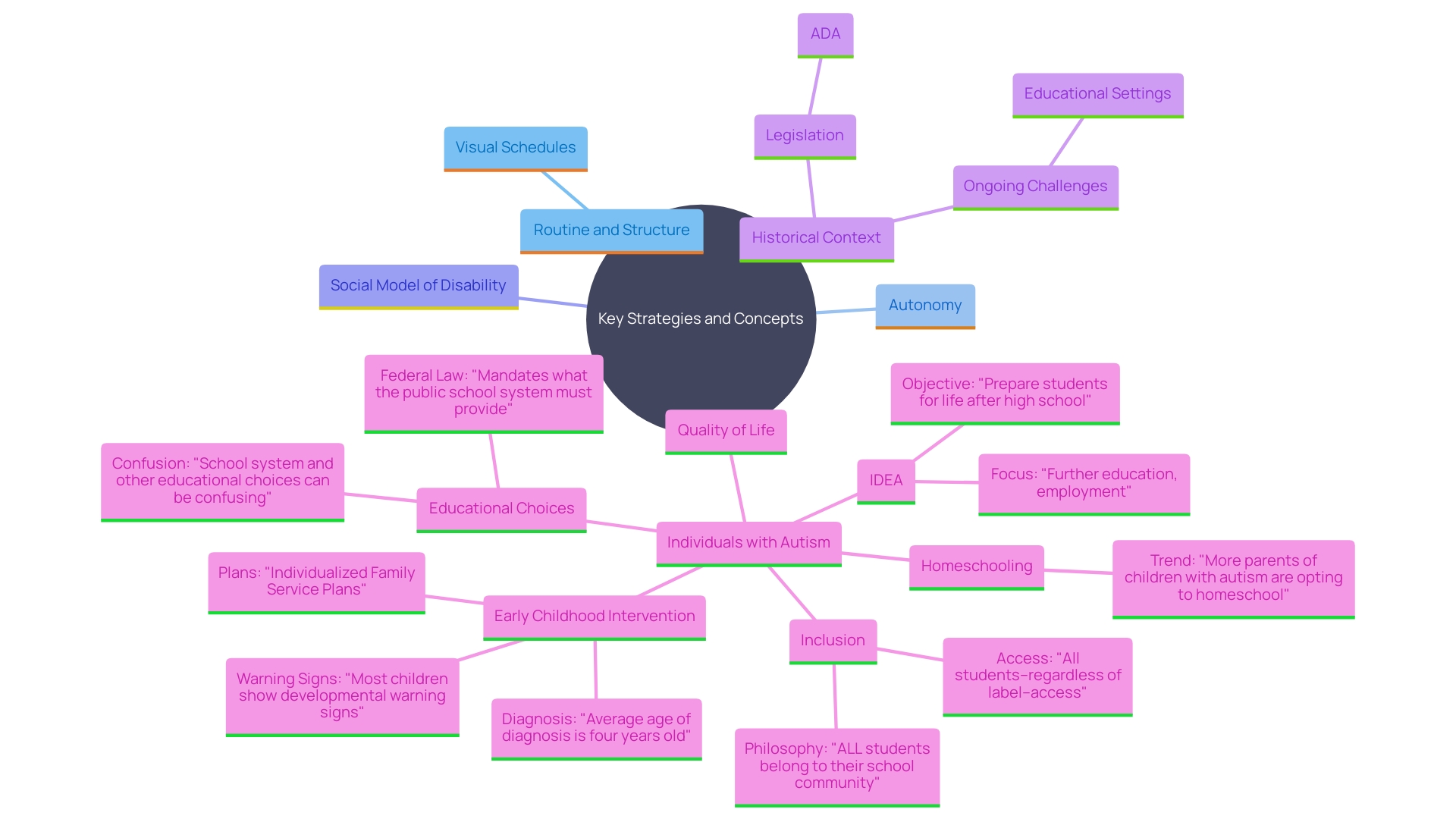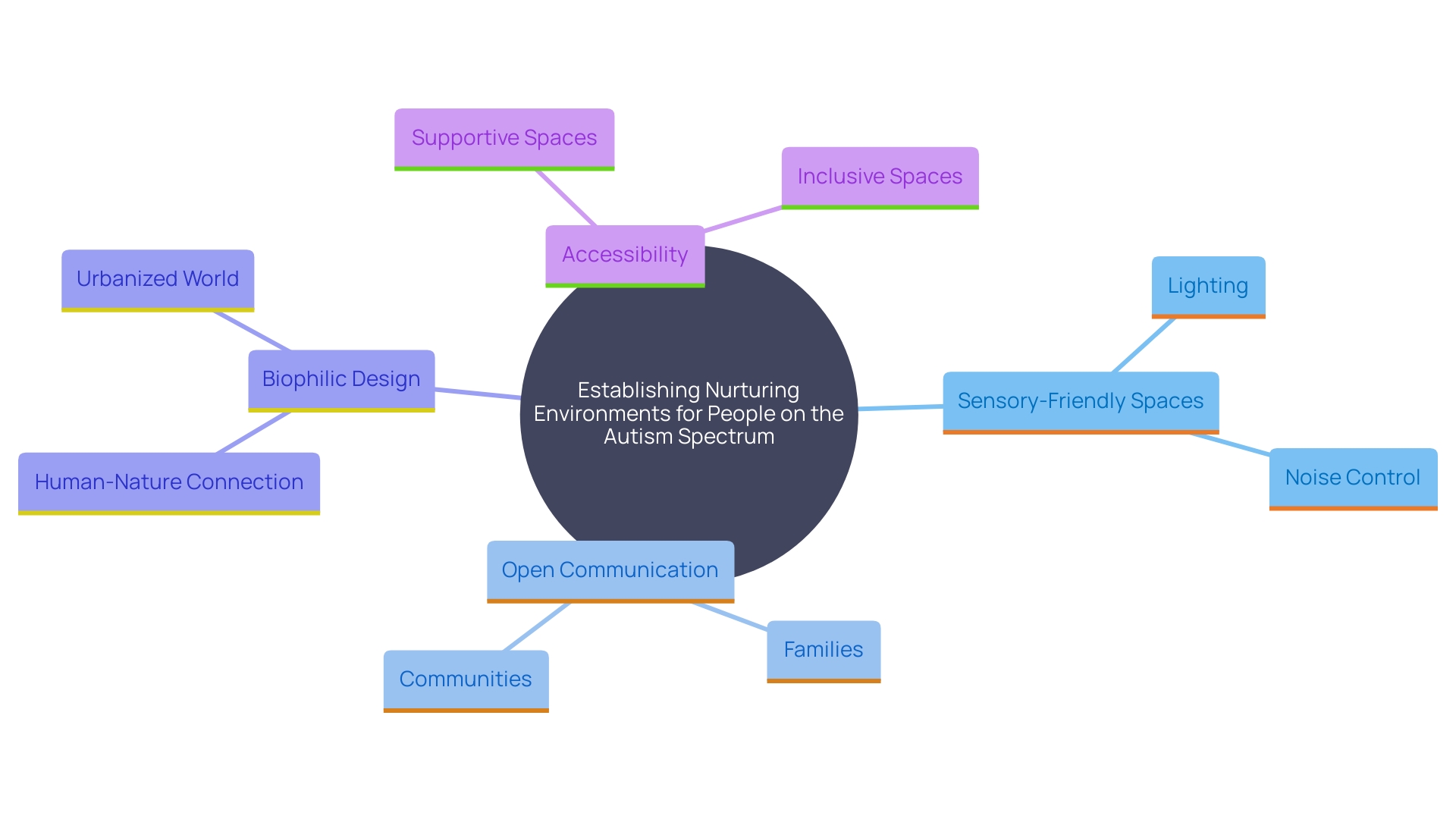Introduction
Navigating daily life can present unique challenges for adults with autism, impacting their overall quality of life in profound ways. From communication barriers and sensory sensitivities to the complexities of social interactions, the obstacles faced by autistic individuals are diverse and often overwhelming. Yet, within these challenges lies significant potential, particularly in the workplace, where autistic adults can thrive with the right support.
Despite a staggering 90% unemployment or underemployment rate among autistic adults in the United States, those who are employed frequently demonstrate remarkable dedication and reliability. Organizations such as the Interagency Autism Coordinating Committee (IACC) have been pivotal in advocating for workplace inclusion, demonstrating that reasonable accommodations often come at no cost and can greatly enhance the contributions of autistic employees.
Understanding the common characteristics of autism is crucial for fostering an inclusive environment. By recognizing these traits and providing necessary support, society can better support autistic individuals in achieving their full potential.
Challenges in Daily Life for Adults with Autism
Living with autism involves navigating a variety of daily challenges that significantly impact overall quality of life. Autistic adults often encounter challenges with communication and interpersonal interactions, along with sensory sensitivities that complicate everyday tasks. These challenges are evident in various environments, from work settings to social gatherings, making it essential to understand the unique obstacles they encounter.
Statistics indicate that up to 90% of adults with autism in the United States are either unemployed or underemployed. 'Despite this, employees on the autism spectrum often remain in their positions longer and take fewer days off than their neurotypical counterparts.'. Additionally, the majority of reasonable accommodations for employees on the spectrum cost nothing. This emphasizes the possible inputs of people on the spectrum in the workplace.
Efforts to support autistic adults in employment have seen significant advocacy from organizations such as the Interagency Autism Coordinating Committee (IACC). Programs like LifeWorks provide essential skills for workplace success, backed by local and state representatives.
Inclusion in employment not only advantages people but also stimulates economic growth. Research indicates that companies that actively hire individuals with disabilities, including developmental disorders, excel compared to those that do not. Revenues, net income, and profit margins are higher, and the U.S. GDP could see a significant increase if more people with disabilities joined the workforce.
Grasping the typical traits of this condition, including difficulties with social interaction and limited behaviors, is essential for promoting an inclusive setting. By recognizing these traits and providing necessary assistance, society can better aid those on the spectrum in achieving their full potential.

Impact of Anxiety on Daily Life
Anxiety is a significant concern for many people with autism, often impairing their ability to participate in everyday activities. Social situations, unexpected changes, and sensory overload are common triggers that can intensify feelings of anxiety. This can result in avoidance behaviors, highlighting the importance of developing effective anxiety management strategies. Research shows that over 40 million adults in the U.S. are affected by anxiety disorders, making it the most common mental illness. For children and young individuals on the autism spectrum, the prevalence of anxiety can further complicate their social participation. As Dr. David Offord noted, equitable participation in daily activities is essential for mental health and well-being. Thus, it's essential for families to adopt tailored strategies to alleviate stress and handle anxiety, ensuring that autistic people can participate completely and purposefully in their communities.

Strategies for Managing Daily Life
Implementing effective strategies can significantly enhance daily living for people with autism. Routine and structure play vital roles in providing a sense of predictability and security. Techniques such as visual schedules, step-by-step instructions, and breaks can help in managing tasks. Furthermore, promoting autonomy through skill-enhancing tasks can enable people to manage their everyday lives with greater confidence.
Dr. Sharief Taraman emphasizes the importance of establishing routines during critical developmental windows, highlighting that meaningful exercise during certain ages is essential for long-term health outcomes. This organized method corresponds with the wider perspective of disability, which views it as a construct that can be managed through appropriate support and accommodations.
The social model of disability, as examined by academics such as Baglieri and Oliver, proposes that fostering an inclusive environment is essential for assisting people on the spectrum. By recognizing their unique needs and strengths, we can reduce chronic stress and promote their mental health and well-being. This approach is crucial for ensuring equitable participation in all aspects of life, including education, home, and leisure activities.
Historically, legislation such as the Americans with Disabilities Act (ADA) and Section 504 of the Rehabilitation Act have paved the way for more inclusive practices in educational settings. Despite these advances, there remains a significant gap in postsecondary graduation rates for autistic students compared to their peers. Continuous efforts to provide necessary accommodations and reduce barriers are essential for bridging this gap.
Integrating these strategies and viewpoints not only improves the quality of life for those on the spectrum but also promotes a more inclusive and fair society for everyone.

Creating Supportive Environments
Establishing a nurturing atmosphere is essential for people on the spectrum. Sensory-friendly spaces that reduce overload through thoughtful lighting, noise control, and calming colors can significantly enhance comfort and focus. This approach aligns with insights from experts like Borg, who emphasize the importance of designing sensorially sensitive spaces tailored to diverse needs.
Encouraging open communication within families, schools, and workplaces is equally vital. A community that understands and addresses the unique needs of those on the autism spectrum fosters inclusivity. As mentioned in the collaboration between Transport for London and the British Institute of Learning Disabilities, understanding the experiences of autistic people can lead to more accessible and supportive public spaces.
Moreover, the idea of biophilic design, which links people with nature, can also enhance the overall quality of life for those who are neurodivergent. Accessibility goes beyond mobility; it includes creating spaces where everyone can navigate with dignity and confidence. This holistic approach is essential in ensuring that all individuals feel a sense of belonging and support in their environments.

Conclusion
Navigating daily life as an adult with autism presents significant challenges, including communication barriers, sensory sensitivities, and social interaction difficulties. The high unemployment rates among autistic individuals emphasize the urgent need for inclusive workplaces. Organizations like the Interagency Autism Coordinating Committee (IACC) show how reasonable accommodations can tap into the potential of autistic employees, enhancing their contributions to the workforce.
Anxiety compounds these challenges, often limiting participation in everyday activities. Personalized anxiety management strategies, along with supportive environments, can help families facilitate greater community engagement. Research highlights the importance of equitable access to activities for promoting mental health and well-being.
Implementing effective strategies, such as establishing routines and structured environments, empowers autistic individuals to navigate their lives with confidence. The social model of disability advocates for recognizing unique needs, which can reduce chronic stress and improve quality of life. Ongoing advocacy is essential to address the existing gaps in education and employment for autistic individuals.
Creating supportive environments is critical for success. Sensory-friendly spaces, open communication, and inclusive design foster a sense of belonging and empowerment. By prioritizing these aspects, society can ensure that all individuals, regardless of neurodiversity, have the opportunity to thrive and reach their full potential.




